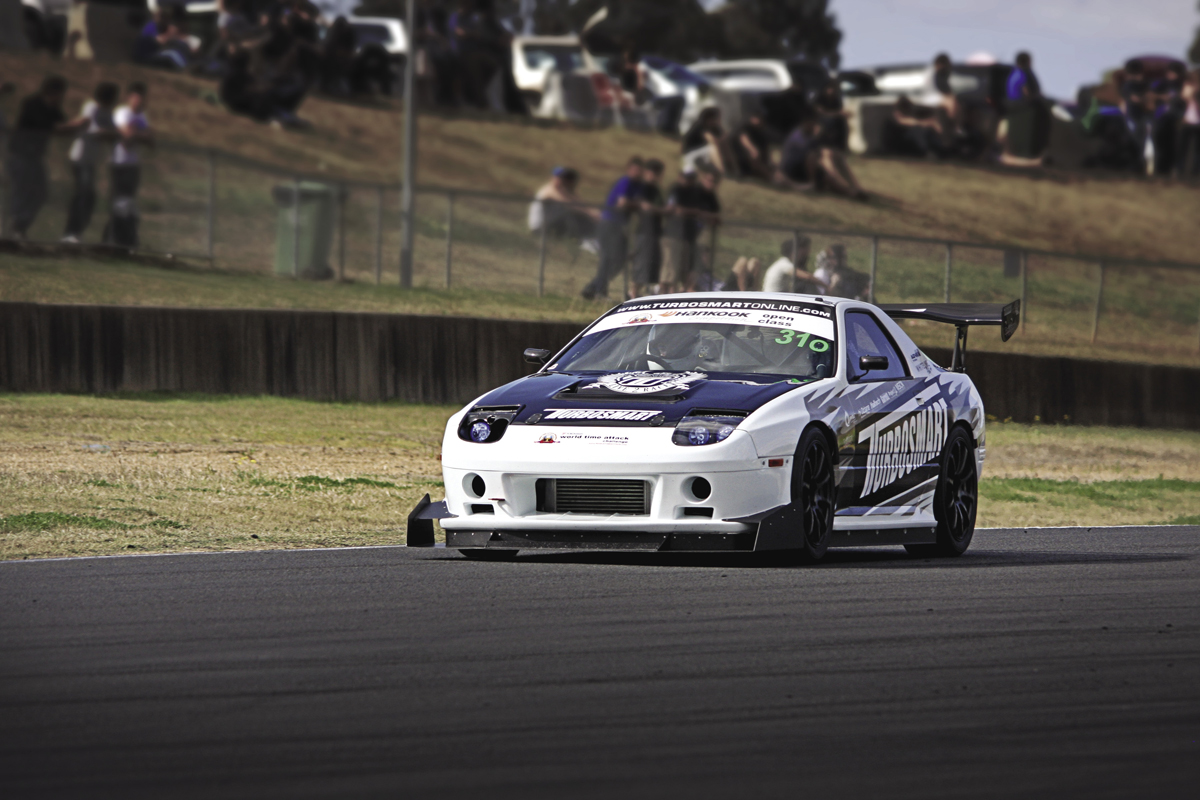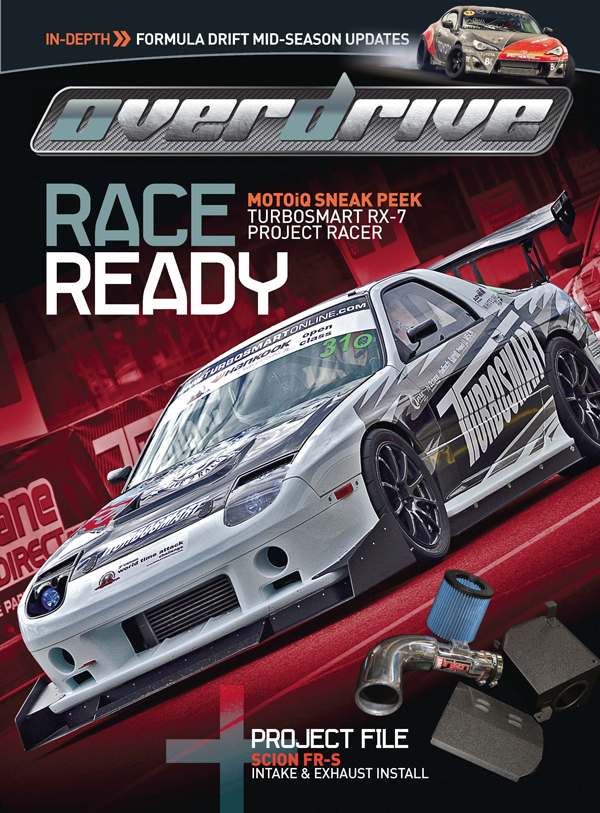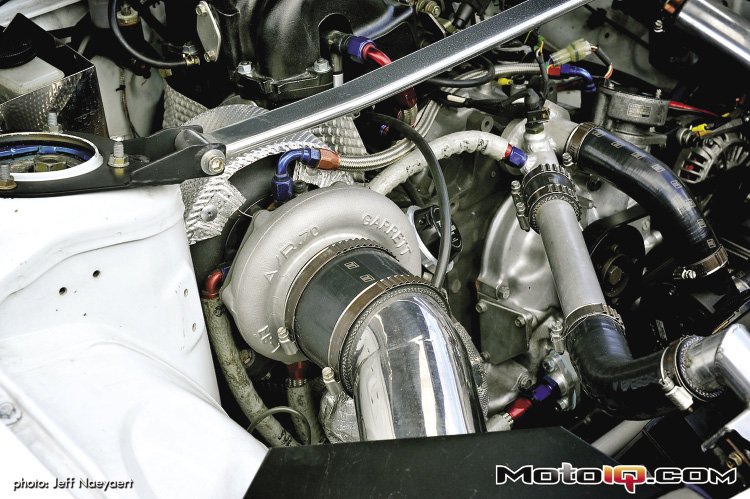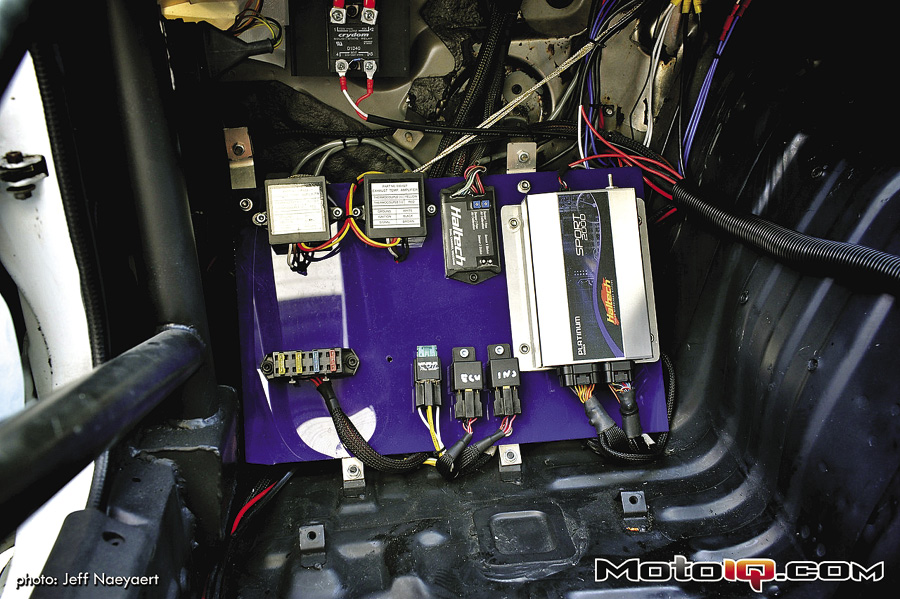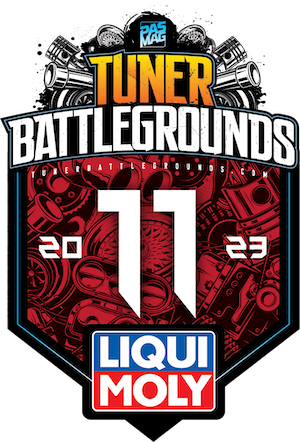The FC is the middle child in the RX-7 family. It doesn't get quite as much love as the other two. The first generation FB was a pure sports car that really introduced the rotary to North America while the third gen FD was (and still is almost 20 years after its introduction) sex on wheels. The FC was designed to be a little softer than the FB, but it's still a better performance car all around with an independent rear suspension and rack and pinion steering. Of course, you could also buy a turbocharged FC!
For the 2011 World Time Attack Challenge, the boys down under at Turbosmart decided to show everyone how highly capable the FC is – even with a simple build. The car was originally owned by a nice old Greek lady and was bought from her with the intent of having a fun street/track car that would also be used for product testing.
Rotaries put out a lot of heat and therefore provided the perfect testbed for pushing Turbosmart components to the extreme. After competing in various rallies, hill climbs, circuit races and the like, the car was entered into the 2010 Superlap event at Eastern Creek where the Time Attack bug swooped in and bit the team hard. So much so they were convinced to take the car off the street and convert it into a proper track-only vehicle to compete in the 2011 WTAC. This is the result.
Yes, there is still a rotary under the hood, but this 13B FC3S engine was built by Pac Performance specifically to run on E85. Rotaries make lots of power per pound of boost compared to typical piston engines (actually, the 13B behaves pretty similarly to a Honda F20C in a S2000, which has one the highest volumetric efficiencies of any car piston engine in production) and this rotary is putting out a healthy 600 hp thanks to a Garrett T04Z sporting a big 63-trim, 84 mm compressor wheel and a 76-trim, 74.2 mm turbine wheel and 18 psi of boost! Rotaries do not like back-pressure at all as it can lead to detonation and spitting apex seals out the exhaust ports. Therefore, a turbo for a rotary typically has a larger turbine wheel matched with a compressor as compared to a typical turbo setup on a piston engine.
Thermal management under the hood is critical, so pay attention to all the heat shielding and wraps that are used on the turbine housing, between the turbo and engine, around the fluid reservoir on the firewall, on the wastegate dump tube, compressor outlet and the water line to the turbo just to name a few places. Take note of the intake tube going to a sealed airbox housing a K&N air filter. This setup should provide two benefits: cold air and, hopefully, a bit of ram air effect. Those two things make turbos and engines happy. The exhaust manifold, dump tube and intake manifold are also ceramic coated by Hi Octane Racing to further manage the heat. And, check out all of the sweet Murray clamps! That's some more serious race car stuff.
Cooling duties are handled by the big off-the-shelf PWR radiator working in conjunction with a Davies Craig single fan and electric water pump. Airflow management is also important on a track car, so the radiator is pretty well sealed to ensure all the airflow goes through the radiator and not around it. A custom-fabricated coolant reservoir/oil catch can setup is found in the lower left.
Regulating the wastegate flow is a Turbosmart Pro-Gate50 featuring a 50 mm valve, of course, while a Turbosmart Race Port handles the blow-off duties. A Turbosmart fuel pressure regulator adds some pretty cool features too, including ports for an easy-to-read mechanical gauge, an electrical pressure sender and an easy-to-adjust screw at the top. The CNC-machined oil filler cap adds just a little bling.
Stuffed under the stock fenders is the largest set of wheels and tires that would fit: 18x8.5-inch Advan Racing RS wheels in a +35 offset with 255/35/18 Yokohama Advan A050 tires and Project Mu brakes featuring four-piston calipers and two-piece slotted rotors. Even the diameter of the springs was kept relatively small to enable a wheel and tire package as wide as possible. In this case, that favored a customized suspension setup from Bilstein Australia, which custom-valved and sleeved the Bilstein shocks along with adjustable camber plates up to spec. Eibach race springs (with 22-lb rates up front and 24.25-lb rates in the rear) are used in conjunction with Whiteline adjustable sway bars and end links to help fine tune the suspension. Like the front, the rear consists of Bilstein coil-overs, though the purple bar is a lateral control link made by Super Now and allows for even more adjustment to the rear supsension geometry.
The lightweight fiberglass body kit consists of the front bumper, hood, side skirts and rear diffuser and is made by Shine Auto Project. Note the side skirt extensions, which help prevent air from curling under the car and causing drag. In the front of the car, you can see the underside of the front splitter. The middle section is the engine bay floor; the intent was to incase the intercooler and radiator to force air through them. As is often the case, the splitter was added two days before WTAC after some testing showed addiitonal front downforce was required. There were plans to create a diffuser, but time ran out. The top-side of the custom front splitter features end plates with triangular gussets and a middle rib for some needed rigidity. The two openings below the headlights feed twin Setrab oil coolers. Remember, heat management is needed for a reliable car!
The backside of the car features a diffuser to add to the rear downforce. The ends of the diffuser help direct some of the turbulent airflow coming off the rear wheels while an APR rear wing complements the diffuser by generating rear downforce to balance out the front. The rear wing is set really far back and the rear hatch glass replaced with lexan along with the side windows for additional weight and safety benefits.
As for the safety cage structure... It extends to the front shock towers to further stiffen the chassis. And, notice the flat plates welded into the floor of the hatch to provide a solid base. The rear shock towers are also tied together to add chassis stiffness. A lightweight Odyssey battery is located low and in the middle of the car to improve weight distribution and reduce the polar moment of inertia. A fire extinguisher is strapped down in reach of the driver, who is further protected by door bars that also serve to provide additional chassis stiffness. The dash is simple consisting of just the bare necessities; a Racepak dash, Sparco steering wheel, ultra-light, FIA-approved Sparco Evo II Plus seat with six-point harness and a simple control panel on the transmission tunnel that houses important switches.
Getting back to the meat and potatoes, a Haltech ECU controls the engine. Part of the functionality of the Haltech includes data-logging and this came in handy during testing. It helped discover that the oil pressure was fluctuating due to oil starvation with the stock pan, so a JPR oil pan was added. The JPR pan is baffled and also adds an extra quart of capacity. Even better: there are no more oil pressure issues! The Haltech also controls via maps both the electric water pump and fan while a Turbosmart e-Boost2 controller works in conjunction with the Turbosmart boost solenoid. The controller itself is mounted on the roll-cage within easy reach of the driver and has three different settings to adjust for conditions.
The team at Turbosmart built this FC with using a mix of good basic principles and good parts without fancy frills or carbon fiber over the entire car. With hard work and careful selection of components, they were able to drop the weight of the car from 2,800 to 2,249 pounds. This is a build anyone could duplicate in their own garage.
At the 2011 WTAC event, this RX-7 clocked a 1:38.572 lap going well over 150 mph down the straight, which is some serious quickness considering how simple of a build this was. The FC isn't the ground breaker the FB was and, although it doesn't have the sex appeal of the FD, it's still a fundamentally good performance platform that can haul some serious ass. Of course, this project wouldn't have been possible without the help and support from several companies and sponsors throughout the construction and development of the Turbosmart time attack FC.
Related Articles
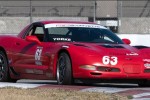 Wilwood Announces Wilwood Corvette Challenge + Speed Ventures Partnership 2024
Wilwood Announces Wilwood Corvette Challenge + Speed Ventures Partnership 2024
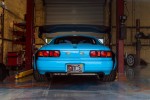 Still Got It: A V6-Swapped MR2 Too Special To Relinquish
Still Got It: A V6-Swapped MR2 Too Special To Relinquish
 EVs for Enthusiasts at CIAS 2024
EVs for Enthusiasts at CIAS 2024
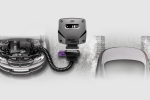 Improving Horsepower and Throttle Response Without Engine Mods
Improving Horsepower and Throttle Response Without Engine Mods
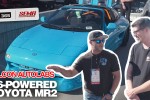 FC AutoLab's Turbo V6-Powered Toyota MR2
FC AutoLab's Turbo V6-Powered Toyota MR2
 Shop Tour: Level 7 Motorsports
Shop Tour: Level 7 Motorsports

